‘Package Holiday 1968-1985’: a very British love affair in pictures
‘Package Holiday’ recalls tans, table tennis and Technicolor in Trevor Clark’s wistful snaps of sun-seeking Brits

A new book, The Package Holiday 1968 - 1985, published by Hoxton Mini Press (available from Amazon), taps into 1970s Brits’ love of sun, sea and teensy weensy Speedos.
In 1960s Britain, jetting ‘abroad’ was a pursuit associated with sophisticated socialites like Aristotle and Jacqueline Onassis, characters such as James Bond and working-class superstars the Beatles. It was only the late 1950s that British European Airways set up its ‘package holiday’ deals to Spain, incorporating short flights, hotel, all-day board, and lashings of family-friendly fun, with Valencia being the first destination. The deals were a hit, and the White Coast region got a canny rebrand as ‘Costa Blanca’ soon after.
Package Holiday: a very British love affair in pictures
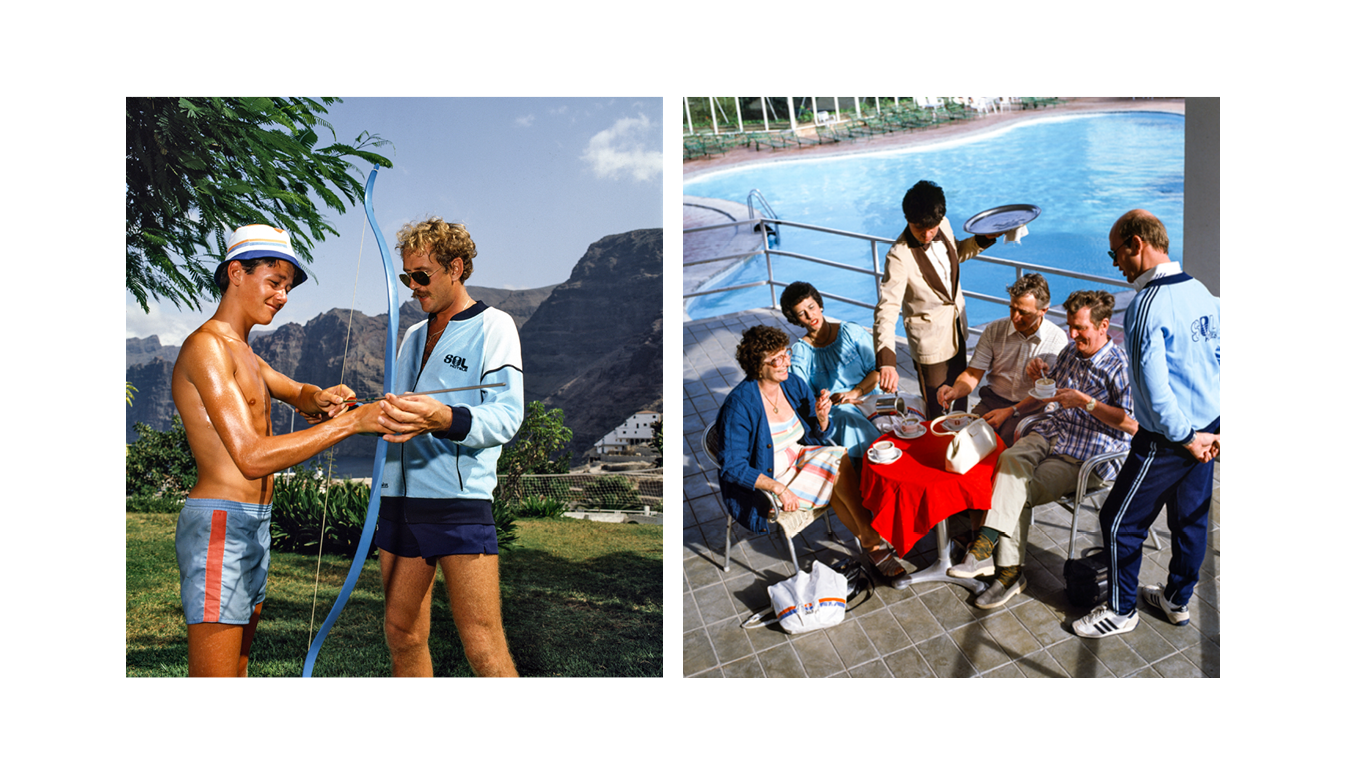
Sunny delight: It was only in 1958 that British European Airways had set up ‘package holiday’ deals to Spain
By the 1970s, many Britons, accustomed to their nation’s short or often rain-drenched summers, were thirsty for a taste of the White Coast and its exotic promise of tans, al fresco dining, and bourgeois sports such as table tennis. The chance to slip into something more comfortable by way of Speedos, bikinis and super-short shorts was an added, and most obviously welcome, extra.

The White Coast offered an exotic promise of tans, al fresco dining, and bourgeois sports
None of this new-found Technicolor fun was lost on the London Royal Air Force-trained photographer Trevor Clark, an Eastender who, having set up a studio in Soho, had become the go-to photographer in 1960s Swinging London, documenting the exploits of bands such as the Beatles and The Rolling Stones while he was at it.
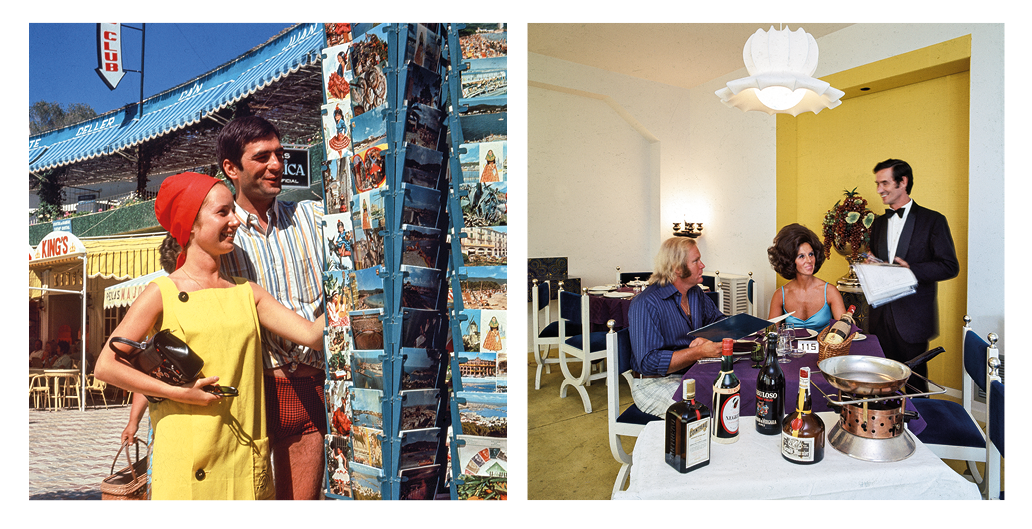
Trevor Clark's images capture the ambitions of a generation eager to escape life in a rapidly de-industrialising Britain
Clark fancied a few rays himself and spotted a gap in the market photographing the wave of newly established resorts in the Balearics, and Mallorca in particular. His images, now collected in a book by his son Jake Clark, not only captured the glamour of the location – those saturated colours would have seemed like a window into another universe on the brochure stands of high-street travel agents back in Blighty – but reflected the ambitions of a generation eager to escape the social and economic restraints of life in a rapidly de-industrialising Britain. Two weeks in Magaluf were, then, an exercise in aspiration acted out in the new style of nylon leisure suits and, a dream that was accessible in the way that Carnaby Street’s delights of the previous decade simply weren’t.
The Package Holiday 1968 - 1985, by Jake Clark with photography by Trevor Clark, at hoxtonminipress.com, also available at Amazon
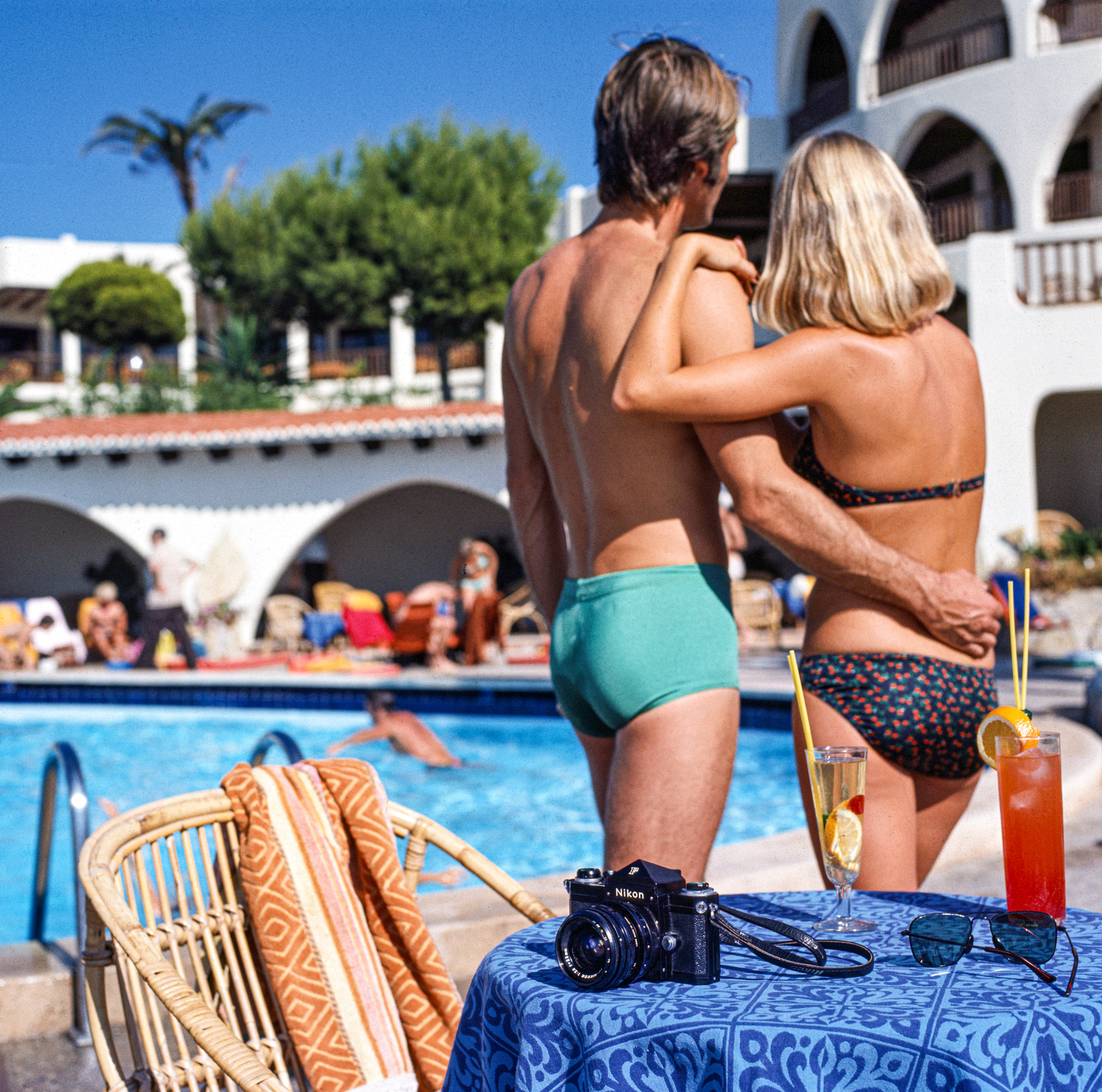
Receive our daily digest of inspiration, escapism and design stories from around the world direct to your inbox.
Caragh McKay is a contributing editor at Wallpaper* and was watches & jewellery director at the magazine between 2011 and 2019. Caragh’s current remit is cross-cultural and her recent stories include the curious tale of how Muhammad Ali met his poetic match in Robert Burns and how a Martin Scorsese Martin film revived a forgotten Osage art.
-
 Click to buy: how will we buy watches in 2026?
Click to buy: how will we buy watches in 2026?Time was when a watch was bought only in a shop - the trying on was all part of the 'white glove' sales experience. But can the watch industry really put off the digital world any longer?
-
 Don't miss these art exhibitions to see in January
Don't miss these art exhibitions to see in JanuaryStart the year with an inspiring dose of culture - here are the best things to see in January
-
 Unmissable fashion exhibitions to add to your calendar in 2026
Unmissable fashion exhibitions to add to your calendar in 2026From a trip back to the 1990s at Tate Britain to retrospectives on Schiaparelli, Madame Grès and Vivienne Westwood, 2026 looks set to continue the renaissance of the fashion exhibition
-
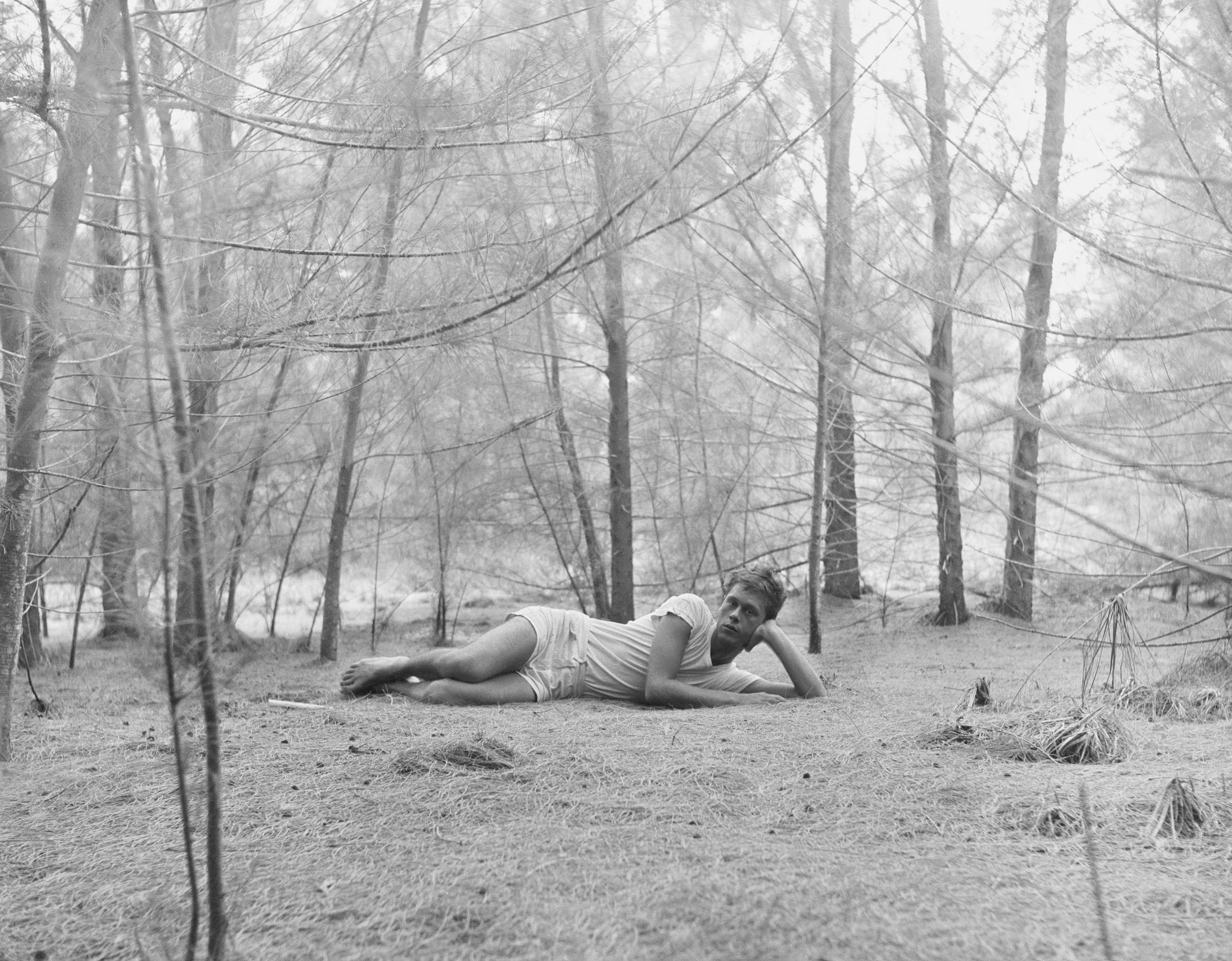 Inside the seductive and mischievous relationship between Paul Thek and Peter Hujar
Inside the seductive and mischievous relationship between Paul Thek and Peter HujarUntil now, little has been known about the deep friendship between artist Thek and photographer Hujar, something set to change with the release of their previously unpublished letters and photographs
-
 Nadia Lee Cohen distils a distant American memory into an unflinching new photo book
Nadia Lee Cohen distils a distant American memory into an unflinching new photo book‘Holy Ohio’ documents the British photographer and filmmaker’s personal journey as she reconnects with distant family and her earliest American memories
-
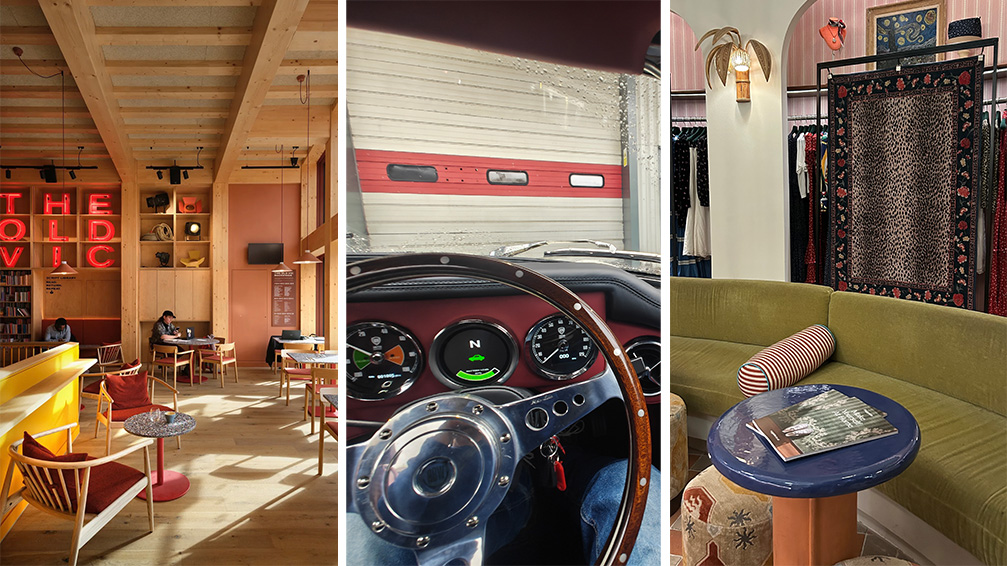 Out of office: The Wallpaper* editors’ picks of the week
Out of office: The Wallpaper* editors’ picks of the weekThe rain is falling, the nights are closing in, and it’s still a bit too early to get excited for Christmas, but this week, the Wallpaper* team brought warmth to the gloom with cosy interiors, good books, and a Hebridean dram
-
 Inside Davé, Polaroids from a little-known Paris hotspot where the A-list played
Inside Davé, Polaroids from a little-known Paris hotspot where the A-list playedChinese restaurant Davé drew in A-list celebrities for three decades. What happened behind closed doors? A new book of Polaroids looks back
-
 Inside the process of creating the one-of-a-kind book edition gifted to the Booker Prize shortlisted authors
Inside the process of creating the one-of-a-kind book edition gifted to the Booker Prize shortlisted authorsFor over 30 years each work on the Booker Prize shortlist are assigned an artisan bookbinder to produce a one-off edition for the author. We meet one of the artists behind this year’s creations
-
 Out of office: The Wallpaper* editors’ picks of the week
Out of office: The Wallpaper* editors’ picks of the weekThis week, the Wallpaper* editors curated a diverse mix of experiences, from meeting diamond entrepreneurs and exploring perfume exhibitions to indulging in the the spectacle of a Middle Eastern Christmas
-
 14 of the best new books for music buffs
14 of the best new books for music buffsFrom music-making tech to NME cover stars, portable turntables and the story behind industry legends – new books about the culture and craft of recorded sound
-
 Jamel Shabazz’s photographs are a love letter to Prospect Park
Jamel Shabazz’s photographs are a love letter to Prospect ParkIn a new book, ‘Prospect Park: Photographs of a Brooklyn Oasis, 1980 to 2025’, Jamel Shabazz discovers a warmer side of human nature